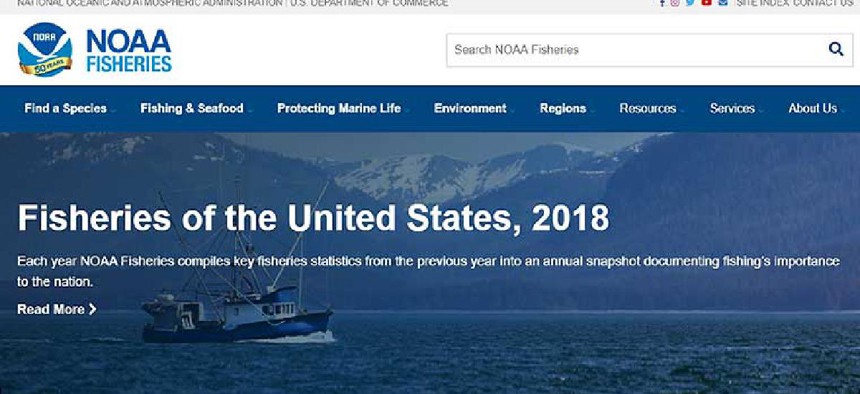Fisheries sites move to the cloud


Connecting state and local government leaders
The National Marine Fisheries Service finishing a project that rolls about 20 websites onto a single cloud-based content management system and improves customer satisfaction.
The National Marine Fisheries Service is nearing the end of a four-year project to roll about 20 websites onto a single cloud-based content management system.
The initiative’s objective is to improve user experience for the public and employees of the agency, which is part of the National Oceanic and Atmospheric Administration. Spurred by 2015 American Consumer Satisfaction Index (ASCI) ratings of some sites scoring less than 50 and low mobile traffic – only about a quarter of all traffic was mobile -- agency officials decided to act.
“Like most government agencies, our web presence grew organically based on program needs, and before you knew it, we had 20-some websites sitting in multiple data centers, multiple technical architectures managed by folks with different levels of competencies and capabilities,” said NOAA Fisheries CIO Roy Varghese. “We didn’t have a consistent user experience for the various stakeholders that engage with us.” The agency wanted “to speak with one voice and ensure that the science and the decisions that are derived out of science are communicated effectively,” he said.
With three more websites to bring onto the platform in the next few months, NOAA Fisheries’ overall ASCI rating is 75 and it has increased overall traffic by about 145% and mobile traffic to 50%. What’s more, 85% of visitors say they would recommend the NOAA Fisheries website, 90% return and 94% say information is easy to find.
The first step in the overhaul was taking inventory of the websites’ content and using analytics to determine how much it was used, how usable it was and where it fell within federal requirements on how long data needs to be made available before it is archived. Creating that migration strategy for what to rewrite, archive and transfer as-is took the longest, Varghese said.
“We started at the program headquarters properties first, and then we looked at the overall workload, resource availability and the like while planning out the rest of the phases,” he said. “The other aspect of this was some of the websites were on platforms that were nearing end-of-life. That also came into consideration in terms of who got prioritized.”
The agency did extensive research into content management systems, consulting with research firms such as Gartner and Forrester Research and sorting through about 90 responses to a request for information before issuing a request for proposals and going through a competitive procurement. NOAA Fisheries selected Acquia’s Drupal 8 in 2016.
A cloud-based platform was a priority to meet the agency’s cloud requirements, and the Acquia platform is certified by the Federal Risk and Authorization Management Program. Another feature that stood out, Varghese said, is its ability to let NOAA Fisheries’ 200 content contributors create content once and publish to multiple sites.
He attributes the 13% bump in user engagement in part to the agency’s website and social media presence and also to navigation changes that made information easier for visitors to find. The rest of the credit goes to changes that made the content accessible and understandable by all stakeholders – not only those in the science field, but also commercial and recreational fishermen, fishing councils and the public.
Content editors worked with Mobomo, an IT service management firm, on six rounds of user testing with four of NOAA Fisheries’ target audiences, and a major finding was that must of the content was too technical for audiences to understand.
The Office of Communications was enlisted to ensure the content was clear for all visitors. “Remember, we’re a science agency, and we have stakeholders who are scientists, but we also [serve] citizens, so we need to be able to communicate to both types of stakeholders,” Varghese said.
A major lesson learned from the project, which won a 2019 Webby Award, is that it’s important to start with clear goals, he said. For instance, NOAA Fisheries wanted to improve its ASCI customer satisfaction rating to 72 within a set number of months and for all sites to be on the public cloud platform.
“This gave our pretty large project team ‘true north’ in terms of which way to focus, which direction to go and what results would be viewed as success,” Varghese said. “That’s served us well so far.”




